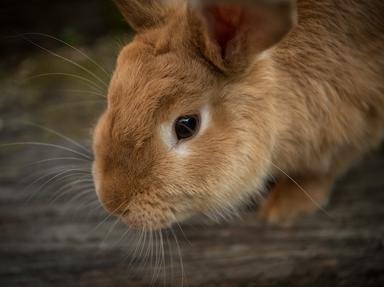Quiz Answer Key and Fun Facts
1. LITERATURE - In the beloved 'Peter Rabbit' storybooks, what was the name of the gardener who tried to keep the bunnies away from his vegetables?
2. MOVIES - In what Oscar-winning dark comedy does the director play a child's imaginary friend, who just happens to be Adolf Hitler?
3. WORLD - The Moon Rabbit or Moon Hare is part of the folklore of various cultures in which part of the world?
4. SPORTS - In some sports, especially basketball, what is a bunny?
5. HUMANITIES - What is meant by the expression "to pull a rabbit out of a hat"?
6. RELIGION - According to the Torah (the Pentateuch or Five Books of Moses), is the hare (or rabbit) a clean or unclean animal?
7. HISTORY - The Hare Indians were a First-Nations people whose descendants supplied the raw material for what transformative research program during WWII?
8. GENERAL | LEGENDS - It was reported in 1726 that a girl named May Toft gave birth to rabbits. Was it a hoax?
9. MUSIC - Not bon appetit but happy listening! Which of these was the real name of an album, an experiment in electronica released right at the start of the 21st century?
10. ENTERTAINMENT - In which Warner Bros. cartoon, with an oddly similar name to the the title of this quiz, does Bugs Bunny battle a mad scientist and a large orangey-red monster wearing white sneakers?
Source: Author
gracious1
This quiz was reviewed by FunTrivia editor
agony before going online.
Any errors found in FunTrivia content are routinely corrected through our feedback system.

